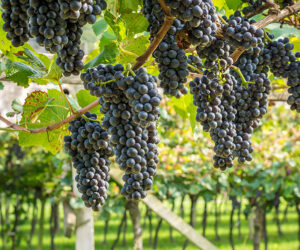We have probably all had a Pinot Gris or Pinot Grigio in our wine imbibing journey. Pinot Gris is a mutation of Pinot Noir where the grape skins are not black or “noir” like its parent, nor are they green like its sibling, Pinot Blanc. Pinot Gris grapes have skins of a dusty rose-gray color.
The grapes are most commonly made into one of two common styles. Alsatian Pinot Gris from northern France has full-bodied, apricot, honey, ginger, and clove notes. This Pinot Gris tends to have lower acidity and may even be barrel aged in neutral oak to impart length and roundness to the wine. More commonly available in North America, we find Italian Pinot Grigio, known for its light body, brisk acidity, uncomplicated and quaffable nature. This often-imitated style of easy-drinking wine has been a huge commercial success. If you have ever been handed a glass of a pleasant white wine without any clearly distinctive character, it was probably Pinot Grigio.
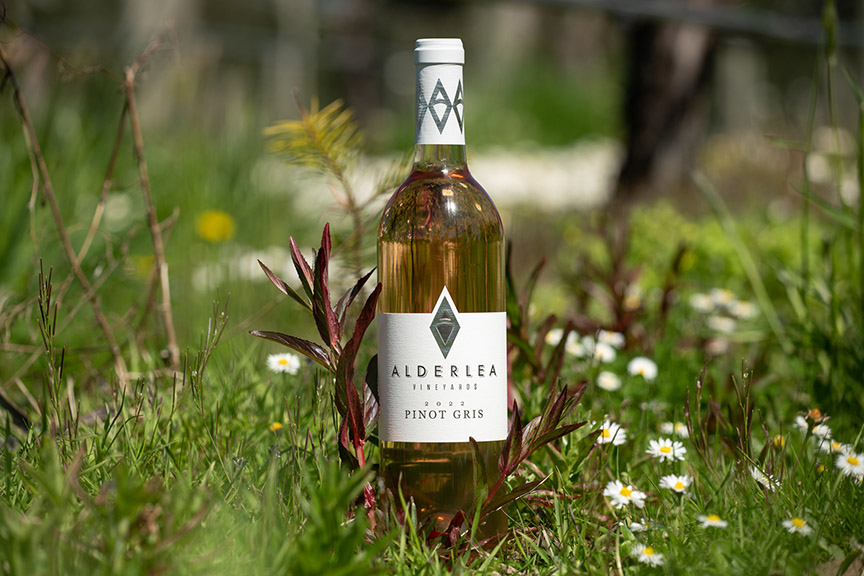
New World wine producers tend to follow one of these two styles. However, for the adventurous, there is a third pathway: Ramato-style Pinot Gris (or Grigio).
Pinot Gris originated in France and was brought to Italy in the early 19th century where it took on the Italian name Pinot Grigio. It found its strongest base in northeastern Italy in the appellations of Friuli-Venezia-Giulia, Trentino-Alta Adige, and Veneto. It is in these appellations that we find the origins of ramato Pinot Gris.
What is Ramato Pinot Gris?
Ramato gets its name from the copper color of the wine as rame means copper in Italian. Ramato Pinot Gris is made by leaving the rose-gray colored skins in contact with the juice after crushing and destemming. This imparts not only a wonderful copper color to the wine, but also gives the wine more body and intense aromatics and flavors, in addition to longevity in aging. At our winery, Alderlea Vineyards in Duncan, British Columbia, the ramato Pinot Gris is particularly favored by our restaurant clients as a versatile food pairing choice. It is served with foods ranging from Vancouver Island halibut in a prawn cream sauce, to curated charcuterie plates, and all the way to northern Indian tandoori chicken dishes.
Ramato Pinot Gris has been made in northeastern Italy for over 100 years, predominantly in Friuli-Venezia-Giulia. The colored, richer style proved very popular, and the technique soon spread to other regions, becoming the dominant method for most of the 19th and early 20th centuries. It wasn’t until the early 1960s when the simpler, light-bodied, bright and acidic version we know today was made for the export markets of Britain and the United States. This latter style became commercially dominant and only in recent years have we seen a revival of the traditional ramato style.
What is the Difference Between Rosé, Orange Wine, and Ramato?
All three of these wine styles are made with some skin contact. With rosé and ramato wines, the skin contact is pre-fermentation. The grapes are destemmed and crushed before the juice and skins are left in contact with each other for some time.
Rosé and ramato largely differ on the grapes used — red wine grapes grapes are used for rosé, whereas for ramato, Pinot Gris with its rose-gray skins is used. I should note that, while not traditional, other similar colored grapes may be used. Gewürztraminer and its offspring Siegerrebe and Traminette are good candidates. As a home winemaker, I once used Frontenac Gris with a bit less skin contact time to make a ramato-inspired wine.
Orange wines are made with white grapes, most often from aromatic varieties like Muscat, Riesling, or Sauvignon Blanc. These grapes are crushed and destemmed (although whole cluster is popular with the “natural wine” crowd) and fermented dry on skins as you would a red wine. Orange wines have a heavier, somewhat tannic and earthy character.
With the history and character of ramato wines covered, let’s look at the “how to” part of the ramato story.

Picking
When harvesting Pinot Gris for ramato wine, it is important to pick early in the morning to ensure the grapes are cool. In our own vineyard, we also ensure that the bins are brought to the winery quickly so that they don’t get too warm in the sun. If you have purchased whole grapes, refrigeration to keep the grapes cool before processing is of great benefit. Cold grapes are much less likely to start spontaneously fermenting during the skin contact phase.
Processing
A standard home winemaking crusher/destemmer works very well to prepare the grapes for skin contact. I recommend fully destemming the grapes to ensure no stem tannins or vegetal character is imparted into the juice. Well-crushed grapes will maximize the skin contact with the juice, whereas whole berries will reduce the color and flavor imprint on the wine.
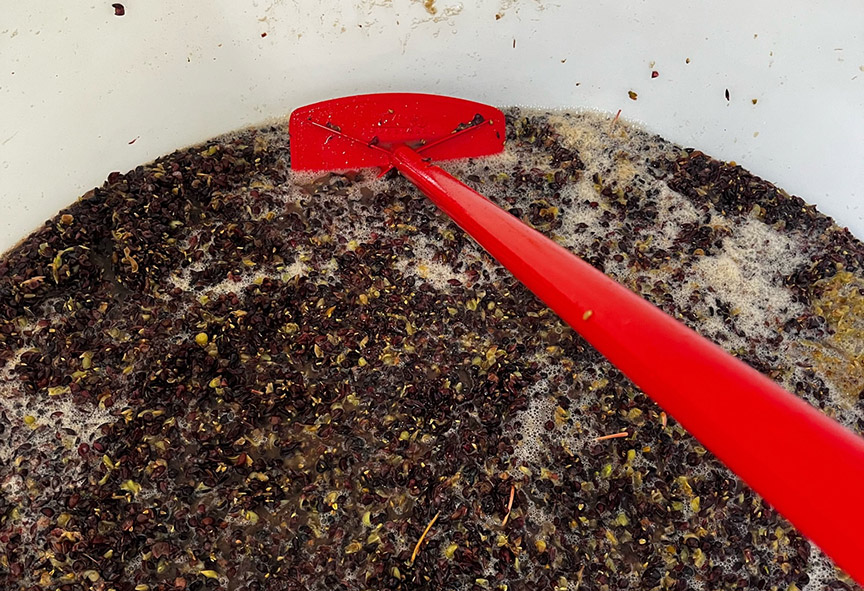
Add 50 ppm SO2 to the maceration container along with the skins and juice. If the grapes have any rot or damage, consider increasing this to 75 ppm. That said, you should be using the cleanest, rot-free grapes you can.
I suggest using a specific white grape maceration enzyme (1.5 g/100 kg dissolved in 10 times its weight in water or juice) added in stages as the bin is filling with your skins and juice to ensure mixing. These are available in home winemaker quantities from several providers (Lallzyme Cuvee Blanc is a good example). These specialized enzyme mixes will increase the aromatics extracted from the grapes and ensure good color without pulling unwanted tannins and strong phenolics from the seeds and skins. It will also make the skins a little easier to press and improve juice recovery when using a home ratchet or bladder press. These maceration enzymes are not inhibited by SO2. I would avoid the generic pectic enzymes commonly used by fruit winemakers as these will extract bitter phenolics from the grapes and may impart too much color.
The skins and juice should be left in contact for 20–26 hours, taking a juice sample and pressing the grapes when you have the desired color will guide you. The wine will lighten somewhat during fermentation and from later bentonite use, so you may consider going slightly darker at this stage than your end goal. It is important to keep the must cold while it is soaking to prevent fermenting spontaneously. Previously, I have used dry ice or homemade ice bombs made from clean milk jugs filled with water and frozen beforehand. A lid on your maceration vessel will keep fruit flies or other unwanted things out of the must while it soaks.
After your maceration is complete, press the must into your carboys or tanks. An addition of 0.3 g/L hydrated bentonite will ensure faster settling. After 48 hours settling, rack the juice off the lees into another vessel. You may then make any desired acid or chaptalization adjustments.
Fermentation
I recommend using a complex yeast nutrient such as Fermaid K to ensure a clean fermentation free from H2S, which can bind up fruit flavors and aromatics. For enhanced mouthfeel, color stability, and aromatics, a specific inactivated yeast nutrient during fermentation can enhance the wine. Opti-White, Booster Blanc, and Noblesse are all worth experimenting with. Noblesse in higher doses imparts low weight mannoproteins and polysaccharides, which our mouths interpret as sweetness. This is a good way to offset higher-acid wines or to cater to those with a sweeter palate without the complexity of residual sugar, sorbate, or sterile filtering. A fermentation stage addition of a white wine tannin such as FT Blanc can help with color stability and depth of the wine.
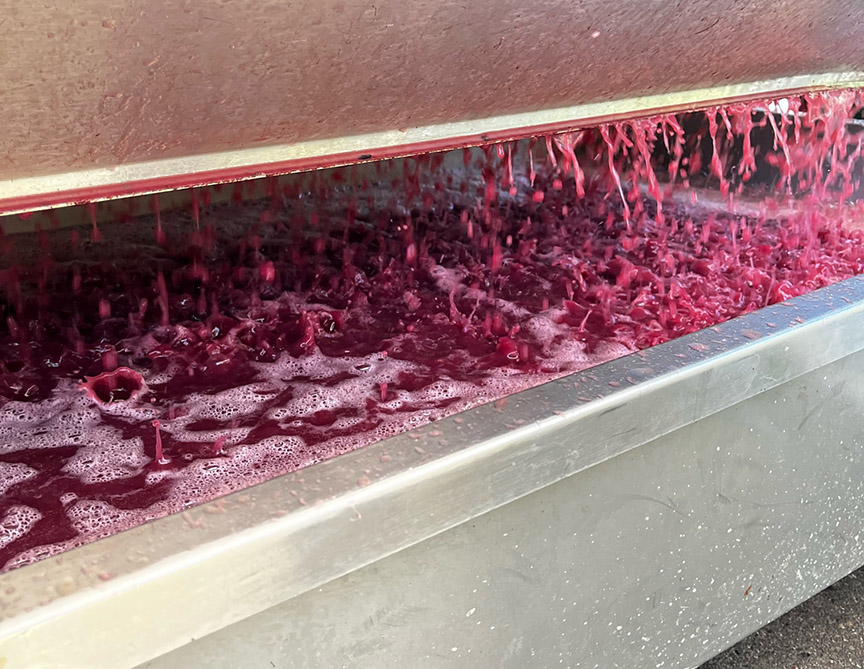
Yeast selection is a personal choice — some of my favorites are D47, R2, K1-V1116, and Renaissance TR313. I recommend fermenting on the cool side, around 55–60 °F (13–15 °C) to maximize aromatics.
To maintain the crisp aromatic nature of ramato wines, I do not recommend malolactic fermentation unless you are working with low-pH, high-acid grapes (<3.1 pH and >9.0 TA).
Post Fermentation
I like the body that sur lie aging with occasional bâtonnage can impart. For those concerned about managing oxidization or wanting a crisper style, skip this and proceed to clarification, settling, and bottling preparation.
Clarifying
If using bentonite for clarifying, I recommend using a lower dose in order to minimize color stripping. Bench trials are advised.
Proceed like you would with a white wine and perform any desired cold stabilizing and filtering before bottling.
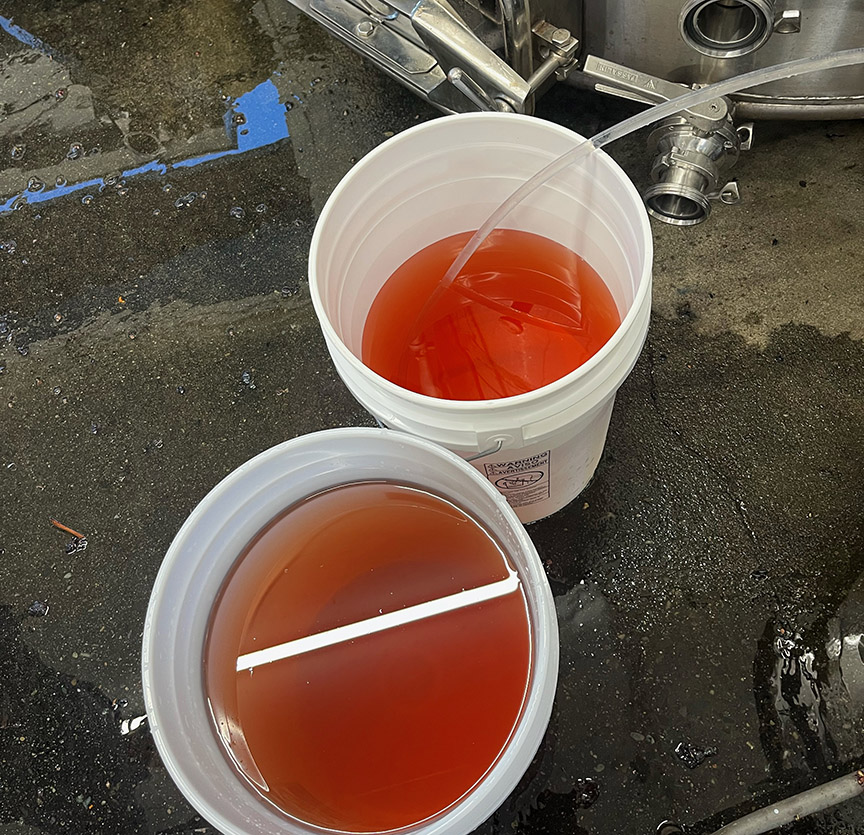
Conclusion
Pinot Gris/Grigio wines can sometimes be a bit “wet, white, and forgettable,” but in the hands of an adventurous winemaker, using a 200-year-old technique from our friends in northeastern Italy, this grape can be complex, versatile in food pairing, and delicious. In our own winery, this style of Pinot Gris is a best seller and has won multiple gold and double gold medals in professional competitions. I’m sure it can make you fall in love with Pinot Gris and win the hearts and palates of your friends and loved ones too.




